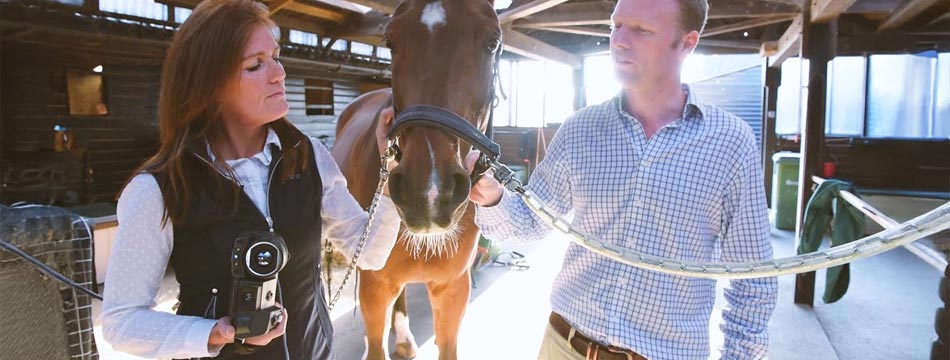
In veterinary medicine, especially equine medicine, early detection of injuries and illnesses is crucial for effective treatment and optimal animal welfare. Veterinary thermography, or animal thermography, and equine thermography offer a non-invasive, efficient method of identifying issues that may not be visible to the naked eye. As such, ailments may be identified and treated earlier before significant damage and pain are incurred; consequently, reducing stress to animals and costs to owners, thereby improving patient welfare and vet-client relationships. This guide aims to assist vets, particularly equine specialists, in selecting the perfect IR camera for animal/ horse thermal imaging and enhancing veterinary diagnostics.
Shop Equine & Veterinary Thermal CamerasQuick Links
- What Should You Look for in a Veterinary & Equine Thermal Imaging Camera?
- Recommended FLIR Veterinary Thermal Imaging Cameras
- Veterinary Thermography Application Examples
- Conclusion: Choosing a Camera for Veterinary Thermal Imaging
What Should You Look for in a Veterinary & Equine Thermal Imaging Camera?
Thermal imaging cameras detect heat patterns and variations, providing visual maps of temperature distribution. These imagers are essential for identifying injuries, lameness, inflammation, and potential sources of infection in horses, cats, dogs, and other animals. To do this effectively, your chosen thermal camera must be able to pinpoint and map slight temperature differences. That’s why, when it comes to veterinary thermography/ animal thermography and equine thermography, you need a thermal camera with a high resolution and a thermal sensitivity (NETD) at or below 50mk. The following are key features to consider when selecting a veterinary thermal imaging camera.
Thermal Camera for Animals: Key Features to Consider
We at PASS advise paying particular attention to the following specifications and qualities when choosing an animal/equine thermal imaging camera.
- Resolution and Image Quality
- Importance: High-resolution thermal cameras provide detailed images, essential for identifying subtle temperature changes that indicate underlying issues.
- Recommendation: Look for cameras with resolutions from 320x240 pixels to 640x480 pixels.
- Temperature Range and Sensitivity
- Importance: Detecting minor temperature changes requires cameras with high sensitivity (NETD).
- Recommendation: Choose cameras with an NETD of 0.05°C (50mK) or lower and a wide temperature range.
- Ease of Use and Portability
- Importance: User-friendly and portable designs are crucial for efficient use in various settings.
- Recommendation: Opt for lightweight, handheld models with intuitive controls.
- Battery Life
- Importance: Long battery life ensures extended use without frequent recharges.
- Recommendation: Aim for cameras with at least 4-6 hours of continuous use.
- Data Storage and Connectivity
- Importance: Efficient data storage and connectivity facilitate record-keeping and data sharing.
- Recommendation: Select models with ample storage and USB, Wi-Fi, or Bluetooth connectivity.
- Software and Analytics
- Importance: Advanced software enhances image analysis and report generation.
- Recommendation: Look for comprehensive software packages compatible with veterinary practice management systems.
Recommended FLIR Veterinary Thermal Imaging Cameras
The following thermal cameras are recommended for veterinary thermography/ animal thermography, specifically equine thermography.
1. FLIR E54
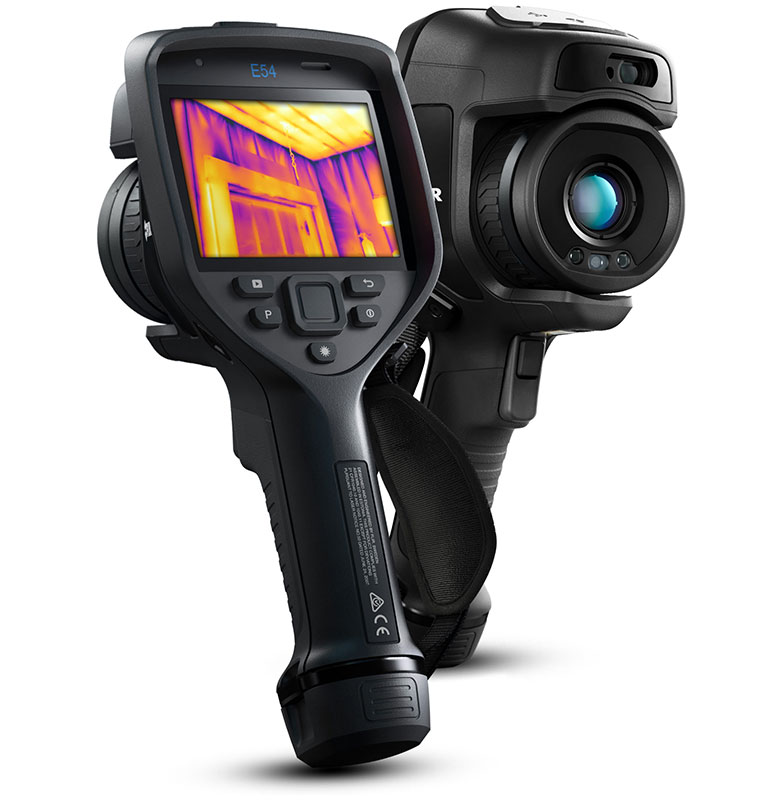
- Resolution: 320x240 pixels
- NETD: <0.04°C (<40mK)
- Temperature Range: -20°C to 120°C and 0°C to 650°C
- Lens: 24°
- Application: Ideal thermal cameras for animals; the E54 can detect inflammation in dogs and cats, as well as identify saddle sores in horses.
2. FLIR E76
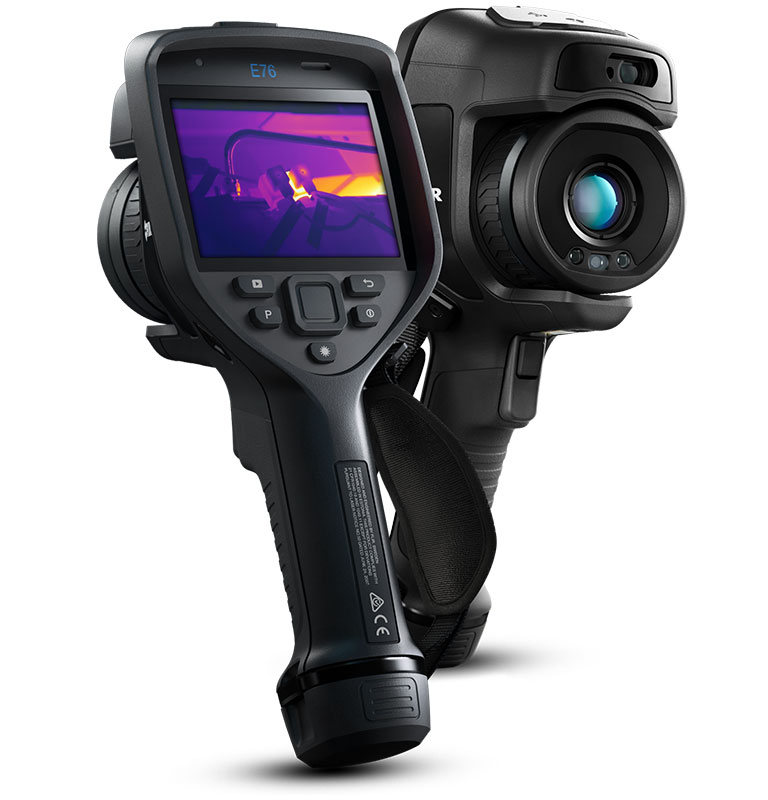
- Resolution: 320x240 pixels
- NETD: <0.03°C (<30mK)
- Temperature Range: -20°C to 120°C and 0°C to 650°C
- Lens: Choice of 14°, 24°, 42°, 80°, or Dual Field of View (DFOV) 14° & 24° lens
- Application: Perfect for equine thermography and identifying lameness in cattle and farm animals, as well as potential infections in zoo animals.
3. FLIR E86
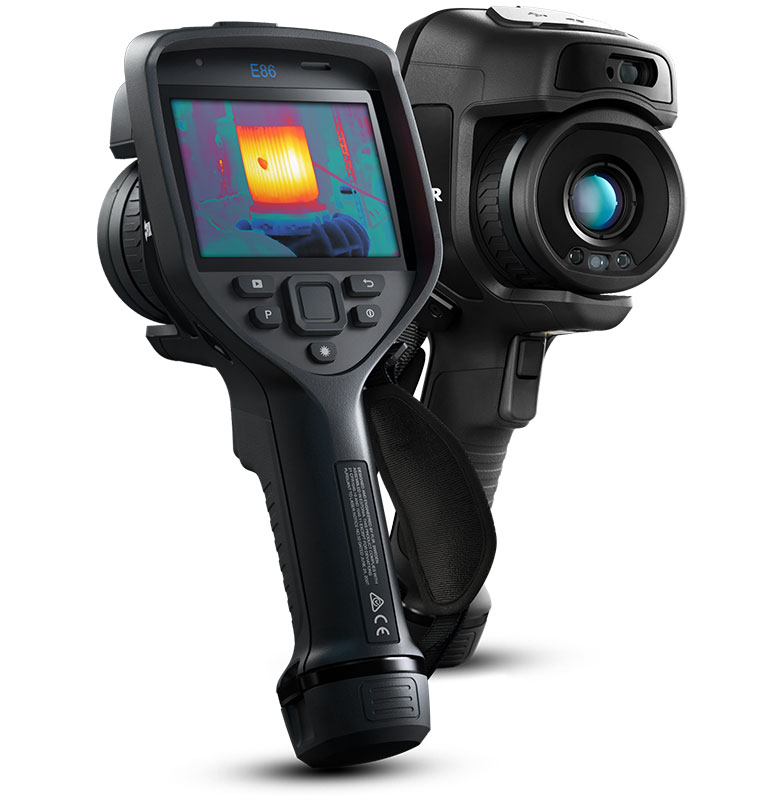
- Resolution: 464x348 pixels
- NETD: <0.03°C (<30mK)
- Temperature Range: -20°C to 120°C; 0°C to 650°C; and 300°C to 1500°C
- Lens: Choice of 14°, 24°, 42°, 80°, or DFOV 14° & 24° lens
- Application: Excellent for veterinary thermography/ animal thermography; the E86 can pinpoint injuries in horses and detect inflammation in smaller animals.
4. FLIR E96
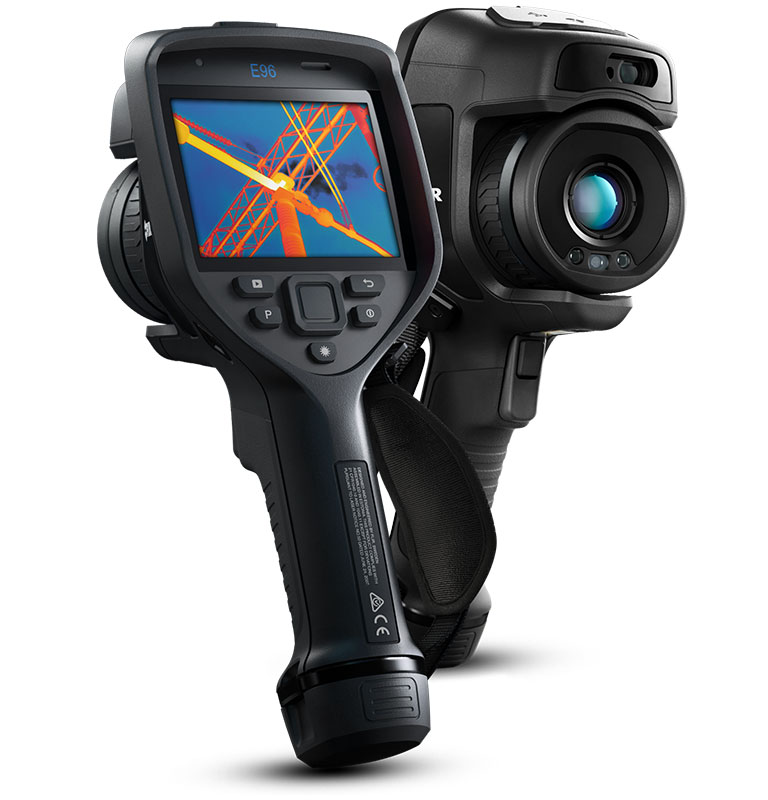
- Resolution: 640x480 pixels
- NETD: <0.03°C (<30mK)
- Temperature Range: -20°C to 120°C; 0°C to 650°C; and 300°C to 1500°C
- Lens: Choice of 14°, 24°, 42°, 80°, or DFOV 14° & 24° lens
- Application: Optimal for animal thermography, identifying subtle temperature changes that indicate underlying issues.
5. FLIR T530
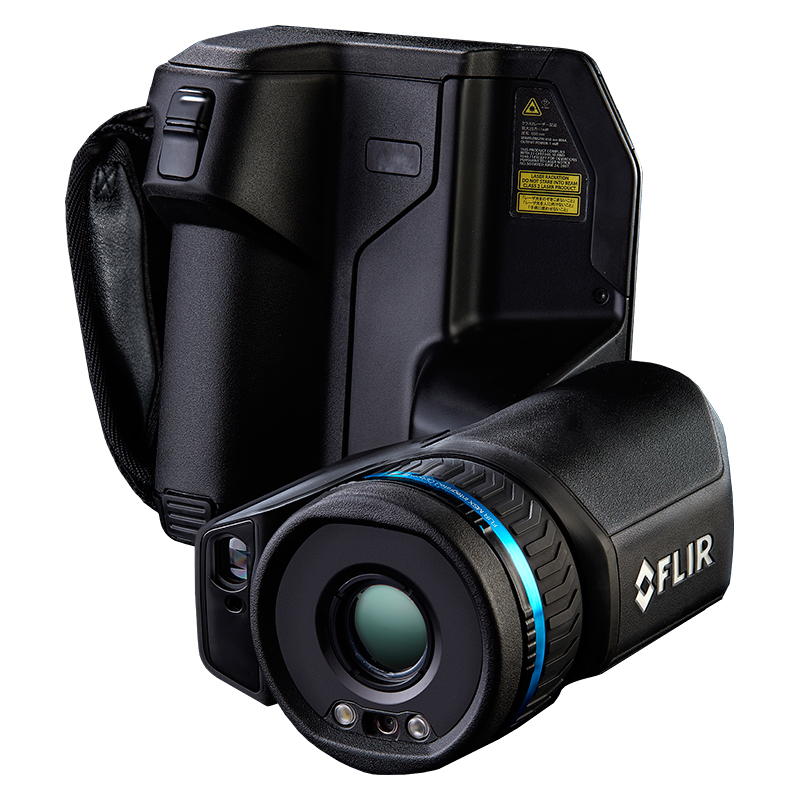
- Resolution: 320x240 pixels
- NETD: <0.03°C (<30mK)
- Temperature Range: -20°C to 120°C; 0°C to 650°C; and 300°C to 1200°C
- Lens: Choice of 14°, 24°, 42°, 80°, or DFOV 14° & 24° lens
- Application: Great for horse thermal imaging, including identifying saddle sores and inflammation.
6. FLIR T540
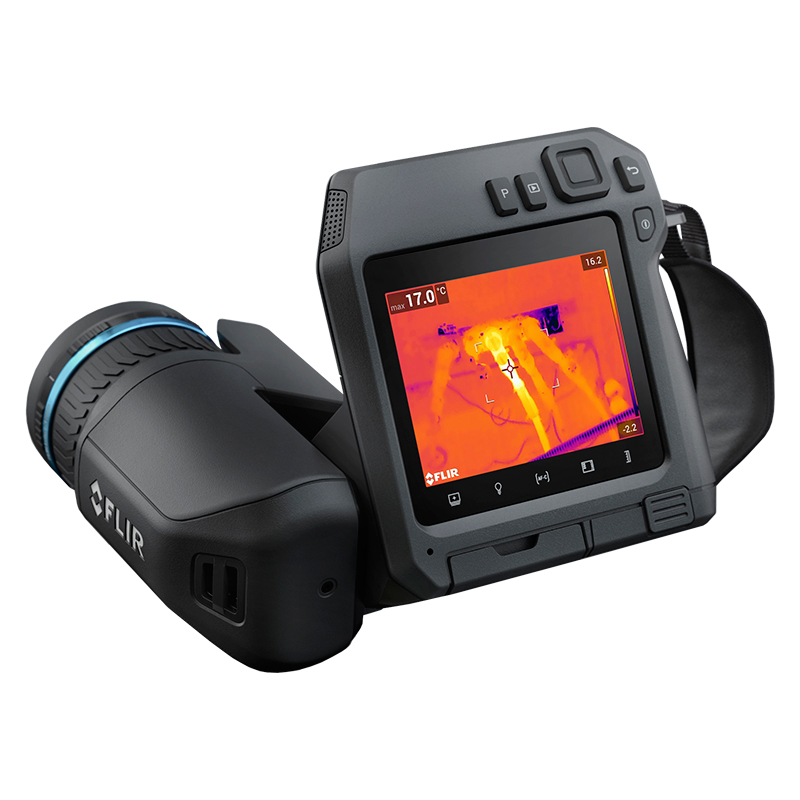
- Resolution: 464x348 pixels
- NETD: <0.03°C (<30mK)
- Temperature Range: -20°C to 120°C; 0°C to 650°C; and 300°C to 1500°C
- Lens: Choice of 14°, 24°, 42°, 80°, or DFOV 14° & 24° lens
- Application: Ideal for equine thermography, especially detecting lameness and potential sources of infection in horses.
7. FLIR T560
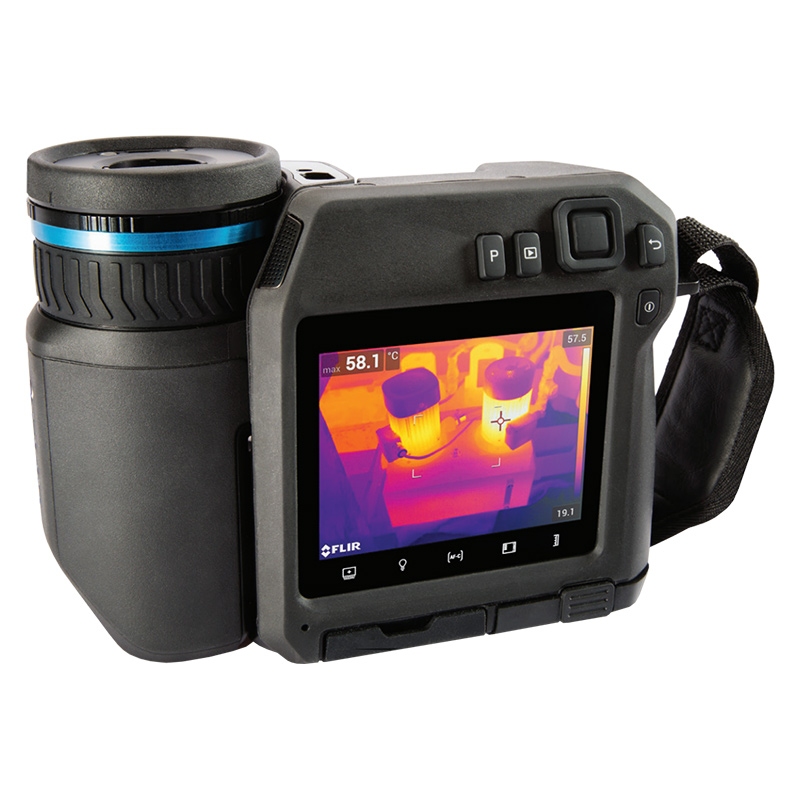
- Resolution: 640x480 pixels
- NETD: <0.03°C (<30mK)
- Temperature Range: -20°C to 120°C; 0°C to 650°C; and 300°C to 1500°C
- Lens: Choice of 14°, 24°, 42°, 80°, or DFOV 14° & 24° lens
- Application: Suitable for veterinary thermal imaging to identify early signs of injury and infection.
Veterinary Thermography Application Examples
Below are just a few examples of how animal thermal imaging, specifically horse thermal imaging, can improve the welfare of domestic, farm, and zoo animals.
- Identifying Injuries
- Example: Using a high-resolution camera like the FLIR E96, veterinarians can detect subtle temperature differences indicating soft tissue injuries in horses.
- Finding Lameness
- Example: The FLIR E76 can help pinpoint the exact location of lameness in cattle by visualising heat patterns in the legs and hooves.
To learn more about how veterinary thermal imaging can improve animal welfare and reduce medication use, read our blog: Catch Cattle Lameness with Economical Thermal Cameras.
- Finding Inflammation
- Example: The FLIR T540's high sensitivity allows for the detection of inflammation in dogs and cats, enabling early intervention and treatment.
- Finding Saddle Sores
- Example: The FLIR E54 is effective in identifying saddle sores in horses, allowing for timely adjustments to prevent further injury.
- Identifying Potential Sources of Infection
- Example: The FLIR T560 can help detect early signs of infection in zoo animals by visualising temperature anomalies that indicate infection hotspots.
What is the Best Thermal Camera for Veterinary & Equine Diagnostics?
Selecting the right thermal camera can significantly enhance the diagnostic capabilities of veterinarians, especially equine vets, leading to improved animal welfare and reduced costs for clients. By considering factors such as resolution, sensitivity, ease of use, and connectivity, veterinarians can make informed decisions that align with their practice needs and budget constraints. FLIR thermal cameras are an excellent choice for vets requiring a method of thermal imaging horses and other domestic, farm, or zoo animals. Investing in a quality thermal camera is a step toward more efficient and effective care, benefiting not only horses but a wide range of animals under veterinary supervision.
Shop Equine & Veterinary Thermal Cameras

